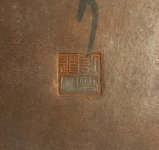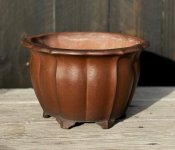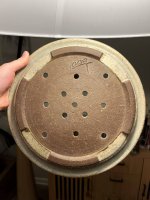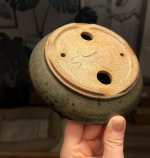JeffS73
Chumono
Haha, OK! Well, titanium can seed crystallisation, it doesn't take much, and the crystals take a different form. But this could also be kiln / firing / holding temp. Really I just know that koyos glaze changed quite a bit over time.No , no , no and no. lol. There is no titanium, no cobalt. Why do you think there is titanium? That would opacify the glaze. I haven't played around with it
There is a long time feud between the Tokoname-based potters and the Kyoto-based. The Japanese potters are like the b-nut forum, lots of drama.
I figured the blue that comes out was from another coloring agent, is it really just copper, perhaps with more flux?

































